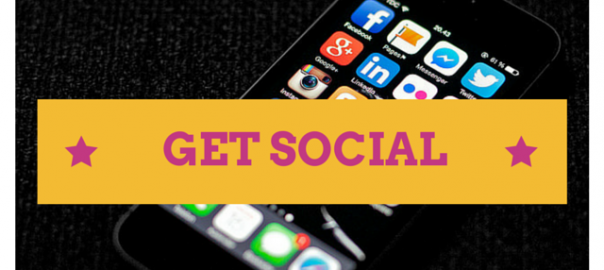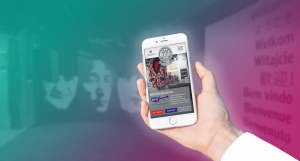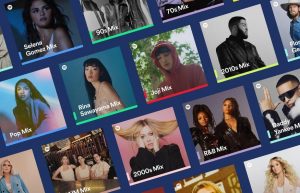For nearly three decades, Chris Marentis, founder and CEO of Surefire Social, has been responsible for driving innovation and sales growth for large media and e-commerce brands as well as start-ups. Marentis is a frequent speaker at local digital marketing conferences and a contributor to SMB and technology-focused publications.
In today’s digital era, it takes much more than online presence alone to reap the benefits of social marketing. Given that 33% of consumers use social media to find brands, products, and services , it’s crucial to have an effective online marketing strategy.
Follow the framework outlined in this article to get your social strategy right the first time and earn maximum ROI in the process.
What Winning Looks Like
To create a winning strategy, first ask yourself what goals you hope to accomplish. Do you want to boost visibility? Do you want your audience to engage with your services? Once you know your goal, ask yourself these questions as you begin to implement:
- Is my goal realistic and measurable?
- Am I creating an active and engaged audience?
- Is my content interesting and dynamic?
- Am I using the right platform relevant to my business?
- Do I have transparent and two-way communication?
Answering yes to these key questions means you’re on your way to a strong social strategy.
Get Organized
Solid social practice doesn’t just happen; it takes a team with the right resources. Whether it’s one person or an entire marketing department, find out what works for your business and don’t be afraid to iterate. One of the best things about social media is that most platforms already have built in tools and metrics. You just need to supply the manpower.
Once you’re armed with a measurable goal and a committed team, it’s time to get moving. Here are the steps to success:
1. Research
If you’re new to social media, spend some time getting acquainted and learn about the difference between platforms.
Twitter is great for informing others while connecting with thought leaders and staying up-to-date. (For more on Twitter, see 7 Easy Steps To Turn Your Twitter Account Into A SEO Magnet)
Facebook gives an opportunity to show a personal side and creating friendships with your audience.
Google+ allows a business to stream conferences, or information sessions. This platform is also integrated with YouTube, as space for sharing videos.
Instagram is a picture sharing platform that can be professional, as well as show a personal side to the business. (To learn more about Instagram marketing, click here)
Prepare a strategy based on your brand and business objectives then choose the right platform.
Remember, you do not need to be present on all platforms.
2. Listen
Your audience is often the best resource for discovering how and where you should be engaging in social media.
Identify relevant communities to find out what’s currently being said about you and your market. There are social media listening tools such as Hootsuite. You can add streams based on the topics and companies you want to follow to see what everyone is posting. You can also integrate other social media platforms so you can follow those feeds on Hootsuite’s dashboard. It’s a perfect platform for managing your accounts, as well as staying up-to-date with conversations.
3. Get In The Conversation
Platforms such as Facebook, Twitter and Instagram use hashtags to connect people in conversations.
Hashtags use the number sign in front of a word or phrase about topics people are talking about. You will find trending topics and suggestions on Facebook and Twitter which mean those are the most popular conversations at that given time. (Best Tools to Summarize Twitter Hashtags)
Find a way to leverage those topics to connect with your audience while always remembering to align those conversations with your brand.
Don’t sacrifice your brand’s identity and values for the sake of joining a conversation .
Also, #don’t #overload #your #content with #hashtags. It makes it difficult for your audience to read and understand.
4. Evaluate
Remember those measurable goals? You can use platforms like Hootsuite. It is a dashboard that will schedule and post updates to other social media platforms like Facebook, Twitter, Google+ and LinkedIn. You can also integrate Instagram and YouTube. If you have your Facebook page connected to Hootsuite, you can view the basic metrics such as total ‘Likes,’ total reach and engagement. With a pro or enterprise package, Hootsuite will provide you with insight and aggregate measurements respectively.
Remember, some useful metrics to evaluate include the quality of the ‘Likes’ and ‘Followers,’ retweets, shared posts and comments. Don’t focus on the quantity of followers as you can have followers that are not identified as your target audience and won’t help you reach your business goals.
5. Know Thy Audience
It’s important to understand who you are engaging online.
Segment your audience by researching their demographics, psychographics, as well as lifestyles and values so you can use that information when crafting content and conversations.
There are a variety of resources you can use such as open data from: Statistics Canada, the Ontario government and the Canadian government. You will also find market research and data from companies such as Neilson and Environics Analytics Canada; however, you need to pay to access those databases.
For comparable data in the United States you can visit census.gov which also has a handy QuickFacts tool. The Bureau of Labor Statistics likewise has a ton of useful audience data, including consumer spending and time use.
6. Take It To The Next Level
A truly winning social media game plan goes beyond likes, clicks, and shares. It creates a stir while humanizing your brand.
Get creative with your social strategy and think about more than your products and services. You want to create a relationship with your audience and build trust before you can sell services and products. For example, if you’re a roofing contractor you might make a YouTube video showing how you’ve improved people’s homes AND lives. You want to be personable and elicit an emotion or a reaction with your audience such as laughter. Talk to them, not at them.
Do you remember Oreo’s tweet during the Super Bowl XLVII blackout? It was relevant, timely and made people laugh. This post was retweeted more than 16, 000 times and Oreo gained followers because it was memorable.
With image by Peter Ras
Launch Your New Social Media Campaign Like This
The post Launch Your New Social Media Campaign Like This appeared first on Search Engine People Blog.
(302)










